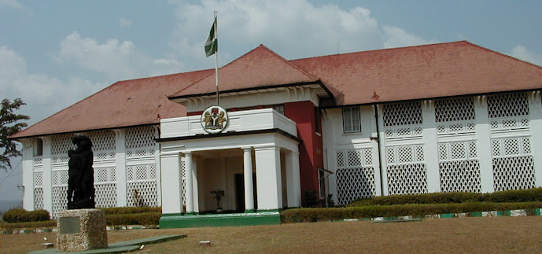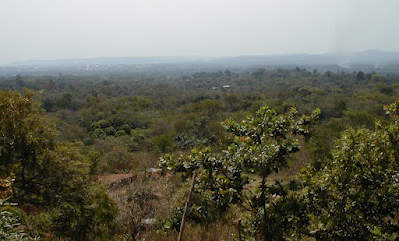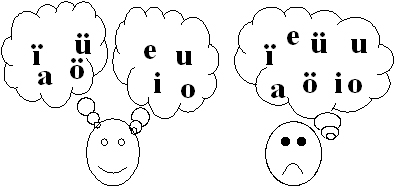Enugu - Top of the Hill
Enugu State is one of the 36 states in the Nigerian federation and was created in 1991 from the eastern two-thirds of Anambra State. Less formally, it is also known as the Wawa state, because the people in this area respond with ‘wa’ (used as an emphasising ‘no’) rather than ‘mba’ used in other parts of Igboland.
Located in the southeast of the country, Enugu spreads its borders to the states of Kogi and Benue to the north, Ebonyi to the east, Abia and Imo to the south and Anambra to the west, covering an area of around 8,730 km2.

Old Governor's Lodge in Enugu
Its landscape changes from tropical dense rain forest in the south to small round-topped hills covered by open grasslands with occasional clusters of woodland in the middle to sometimes almost sandy savannah in the north. The state includes most of the Udi-Nsukka plateau, a pair of plateaus that form a nearly continuous elevated area. The Nsukka plateau extends about 130 km from Nsukka in the north, to Enugu in the south and continues southward for about 160 km to Okigwe. It rises more than 300 metres and its highest part is found 20 km northwest of Enugu. The steep slopes form spectacular views of the hills and lowlands, broken up by numerous streams and rivulets feeding the Niger and Benue rivers.
With a population of about 3 million, Enugu State is home to the Igbo speaking peoples, widely noted for their industry, entrepreneurship, resourcefulness, travelling and most importantly hospitality (it is custom to greet people very warmly first, asking about their family and health, before starting any business). The Igbos have had long contact with western influences and English is spoken widely. Christianity is the major religion, mostly due to the history of contact with the west in the pre-colonial period. Farming and trading constitute the key occupations in the state’s economy: yam, cassava and palm-oil products are the main crops, but corn, rice, pumpkin, melon, beans, okra, avocado, pineapple and even cashew nuts are cultivated as well.
Enugu town, the state capital, lies at the foot of the Udi hills and is surrounded by attractive stretched hills and lies at an altitude of 240 metres above sea level. Conformably, its name consists out of the 2 words ‘Enu’ (top) and ‘Ugwu’ (hill) resulting to ‘top of the hill’.
Enugu was founded in 1909, when Mr. Kikson, a British Mining Engineer, stumbled on large coal reserves in the Udi ridge while looking for silver. Lord Lugard, the then Colonial Governor, took keen interest in the unexpected discovery, and by 1914 the first shipment of coal was made. Port Harcourt still thanks its existence to these mining shipments. Attracted by the increasing mining activities, Iva Valley, Coal Camp and Asata were established by foreign enterpreneurs and the indigenous labourers.
Enugu acquired township status in 1917 and was called Enugwu-Ngwo, but because of the rapid expansion towards areas owned by other indigenous communities, the city was renamed in 1928 to Enugu.

Enugu Landscape
The British became more aware of the strategic interests of this area, and other foreign businesses began to move into Enugu. In 1939, Enugu became the capital of the Eastern Provinces of Nigeria, during which period most of the colonial style buildings were constructed. The colonial charm is still witnessed in the old government buildings and mansions in the Government Reserved Area (GRA), a civil servant’s housing district exclusively reserved for administrative staff. It became the administrative city of the eastern region when the country was divided in three areas in 1951.
Enugu became more diversified in the 1960’s with the creation of the industrial estate of Emene. Located near the airport, steel pipes, asbestos, cement products, and oxygen and acetylene gases were manufactured. Presently, it also includes a large Mercedes Anamco truck assembly plant.
By 1963, with the creation of 12 states in Nigeria, it became the capital of the East Central State, and the city had grown from the original village population of 100 to 138,000 inhabitants. Helped by the high literacy rate in this area, most of them were civil servants and business entrepreneurs. In 1967, it served briefly as the provisional capital of the secessionist Republic of Biafra and later became the capital of Anambra State in 1976. Currently, the city has 465,000 inhabitants and its city premises are spread over an area of 73 km2.
There is a large power station near Oji River, which used to supply most of the state’s electricity, though with the abandonment of coal as a main energy source, it is not fully operational presently. With the deregulation and the proposed privatisation of electricity generation in Nigeria, the State Government is looking at private investors for the reactivation of the Oji Power station. This is more so with the proximity of the Enugu coalmines to the power station – a driving distance of about 20 minutes.
The cost of living is cheap and affordable compared to other parts of the country. The city counts numerous social outlets and many hotels, including the Nike Lake Resort Hotel, a five star resort located next to the Nike Lake and once considered one of the jewels of Nigeria. There are over 200 health establishments, (private and public), well over 50 petrol stations, 90 hotels and restaurants, 17 different banks with 24 branches, a zoo, a museum and a golf course. It also hosts the British council library and various university faculties.
Obviously, one should not forget to go outside the town and enjoy the beautiful landscapes filled with a wide variety of hills, lakes, caves, springs, waterfalls and forests. The hills and lowlands can be best admired from the Udi and Awgu hills, offering spectacular panoramic views and an opportunity for mountaineering. If you are near the Udi hills, paying a visit to the coalmines is certainly worthwhile as well. You may wish to visit the Nike Lake resort to enjoy the lake, its surroundings and park. This is very useful for families with children as the park includes a large playground. Close to Ezeagu, you can find a waterfall, spring and a lake, still to be further developed as a tourist complex. The same applies to the eight lakes near Opi, surrounded by woodland with breathtaking landscapes. Listed below is a compilation of attractions taken out of the Tourist guide map of Enugu together with some other sites that are well worth a visit:
Achi Shrine; Aku Shrine and ancient city walls; Amegu-Ezze Forest; Amigbo Ozalla Ngene-Ani lake with crocodiles; Awgu Range of hills; Awhum 30 metres waterfall; Effium Forests; Eha-Alumona Palaces; Enugu Town IMT Sculptural garden and art gallery, Polo amusement park, Coal mines (Onyeama and Okpara), Historical monuments (e.g. Eastern region Parliamentary building and old Governor’s lodge), Zoo, Enugu national museum; Ezeagu Waterfalls, Lakes, Caves, Springs and panoramic landscapes; Isu-Awaa Cave; Leija Shrine; Nara Palace; Ndiagu-Amegu Beaches; Ngwo Waterfall with very clear water; Nike Paschal Abbey with panoramic view of Enugu, Nike lake and resort; Nsukka Zoo and Range of hills; Obeagu Cave; Obinofia Cave; Ofurekpe Beach; Oghe-Amansiodo Hot spring; Oji River Cave and lake; Opi Eight lakes, Gully erosion; Udi Range of hills; Ukehe Palace; Umumba Warm spring.
To visit an attraction, best is to ask a local friend or colleagues to bring you there, as most of the sites are not fully developed for tourism. Some attractions may be considered sacred by the local people, so it is worth making yourself familiar with the local beliefs before visiting the location.
Conversation: Good-morning!
♬ Click here to listen to this conversation.| - Ütütü öma. | Good-morning. |
| - Ütütü öma nke gï. | Good-morning to you. |
| - Onye öcha, olee ka i mere? | White man, how are you? |
| - Ö dï mma. | I am fine (it is fine). |
| - Olee aha gï? | What is your name? |
| - Aha m bü Emeka. | My name is Emeka. |
| - Olee ebe ï na-aga? | Where are you going? |
| - Ana m aga ölü. | I am going to work. |
| - Ebee? | Where? |
| - Ana m alü ölü na GRA. | I am working in GRA (Government Reserved Area). |
| - Ebee na GRA? | Where in GRA? |
| - 6, Temple Avenue. | 6, Temple Avenue. |
| Na ülö ölü: | At the office: |
| - Olee ebe i si? | Where do you come from? |
| - Esi m na obodo bekee. | I come from Europe. |
| - Gïnï ka ï bïara ime? | What have you come to do? |
| - Abïara m ïlü ölü. | I have come to work. |
| Ï na-asü bekee? | Do you speak English? |
| - Mba, ana m asü Igbo. | No, I speak Igbo. |
| - Kodi. | Bye-bye. |
| - Kodi. | Bye. |
Vocabulary
|
|
Grammar: Language and Pronunciation
Igbo language is one of the many languages spoken in Nigeria. Since its independence, the main languages in Nigeria have been Hausa, Igbo and Yoruba, also known by the word ‘wazobia’, i.e. ‘wa’ in Yoruba, ‘zo’ in Hausa, and ‘bia’ in Igbo, all meaning ‘to come’. Igbo is predominantly spoken in Abia, Imo, Enugu, Anambra, Ebonyi and parts of Rivers and Delta states. Speaking English, you can get by in most parts of Igboland, though in some very remote areas, only Igbo is understood.
Igbo language is classified as a Niger-Congo language and belongs to the Kwa sub-group of languages spoken in sub-Saharan Africa. It is estimated that some of these Kwa languages have been spoken in roughly the same locations as today for over 4,000 years. Main characteristics for the Kwa languages are the tones and vowel harmony.
Tones (also called contrastive pitch) are used to differentiate words that are written identically. For example, the same word in Igbo may have four different meanings depending on its pitch. In tone languages, pitch is a property of words, but what is important is not absolute pitch but relative pitch. Igbo language makes use of two main tones: the high tone (such as u as in “rule”) is pronounced with the tongue bent towards the roof of the mouth. The low tone (such as a in “father”) is produced with the tongue flat and low in the mouth and with the mouth a bit wider than for high tones. Considering the high and low tones, akwa can mean either weeping (high-high tone), cloth (high-low), egg (low-high) or bridge (low-low).
Vowel harmony involves words which are either built up of a combination of syllables with an i, e, o or u vowel, or on the other hand a combination involving syllables with an a, ï, ö or ü vowel, for example:
Igbo Igbo anü meat, animal
ezi pig ülö house
Syllables with both combinations of vowels rarely occur in one word, unless it is a compound word or compound verb. Also, some of the suffixes do not harmonise with the verb stem.

Vowel Harmony
Many words in the language are built up from smaller words, not to say for a few English words that have been copied directly. There are a wide variety of dialects, some of which resemble each other, though others might have totally different vocabularies and pronunciations, though word order and tone are consistent throughout the grammatical Igbo structure. The two main dialect zones, Onitsha and Owerri, have most words in common, but there are some differences in the vocabulary, for example:
Onitsha Owerri kedu olee what, which one ole how many fa ha they afa aha name
Igbo written language is phonetic and it uses most of the English alphabet. The consonants are similar to the use as in the English language, though there are separate combinations of consonants, i.e. gb, gh, gw, kp, kw, nw, ny and sh, which are official recognised letters. The sh combination is hardly used. In addition, there is one other character, ñ, which is a voiced nasal ‘n’. These characters and some of the various combinations are listed with their pronunciation below:
as in pronounced as meaning gb egbe e-gbe hawk gh agha a-ga war gw gwa g-wa to tell kp akpa a-pa bag kw kwaa kwaa also, too mm mmiri m-miri water nn nna n-na father ñ añülï anju-li happy, merry nw nwa n-wa child ny nyaa n-ya to drive
For the vowels, the difference is more distinguishing. Some of the vowels have an umlaut (this is according to the New Standard Orthography; in previous versions of Igbo orthography there was a dot below the vowel) above the letter indicating a different pronunciation:
vowel pronounced as in a arm e set i see ï pit o go ö author u put (verb) ü shot
The Igbo alphabet as found in dictionaries, is in the following order:
a, b, c, ch, d, e, f, gb, gh, gw, h, i, ï, j, k, kp, kw, l, m, n, ñ, nw, ny, o, ö, p, r, s, sh, t, u, ü, v, w, y, z